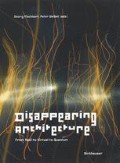Abstract
Ubiquitous Computing (Ubicomp) is a term first coined by Mark Weiser [1] more than a decade ago. In his vision, computers are no longer isolated objects sitting on the desk, but surround us everywhere: walls could be electronic boards and displays; books could be electronic information stores and cameras act as digital picture libraries. Some of this vision has already come true with wall-sized Smart Boards that support writing, editing and capturing of electronic text, while PDAs can be used for diaries, e-books and note-taking, where some of them are also integrated with digital cameras. While such computers largely follow the PC paradigm, where one computer is dedicated to one user at one point in time, new types of computer systems are arising in Ubicomp that are invisibly embedded into our everyday environment.
Preview
Unable to display preview. Download preview PDF.
References
M. Weiser, “The Computer of the 21st Century,” Scientific American 265, 3, September 1991, pp. 66–75.
A. Schmidt, “Implicit Human Computer Interaction Through Context,” Personal Technologies, Vol 4(2), June 2000.
D. Norman, “The Invisible Computer,” MIT Press, 1998.
M. Beigl, H. Gellersen, A. Schmidt, “MediaCups: Experience with Design and Use of Computer-Augmented Everyday Objects,” Computer Networks, Special Issue on Pervasive Computing, Elsevier, Vol. 35, No. 4, March 2001, Elsevier, p. 401–409.
Mark Weiser and John Seely Brown, “The Coming Age of Calm Technology,” Xerox Parc, 1996.
A. Schmidt, A. Takaluoma and J. Mäntyjärvi, “Context-Aware Telephony over WAP,” Personal Technologies 4(4), December 2000.
K.S.J. Pister, J.M. Kahn, B. E. Boser, “Smart Dust: Wireless Networks of Millimeter-scale Sensor Nodes,” University of California, USA 1998.
M. Beigl, H. Gellersen. “Smart-Its: An Embedded Platform for Smart Objects,” Smart Objects Conference (sOc) 2003, Grenoble, France.
Editor information
Rights and permissions
Copyright information
© 2005 Birkhäuser — Publishers for Architecture
About this chapter
Cite this chapter
Beigl, M. (2005). Ubiquitous Computing. In: Flachbart, G., Weibel, P. (eds) Disappearing Architecture. Birkhäuser Basel. https://doi.org/10.1007/3-7643-7674-0_6
Download citation
DOI: https://doi.org/10.1007/3-7643-7674-0_6
Publisher Name: Birkhäuser Basel
Print ISBN: 978-3-7643-7275-0
Online ISBN: 978-3-7643-7674-1
eBook Packages: Architecture and DesignEngineering (R0)

